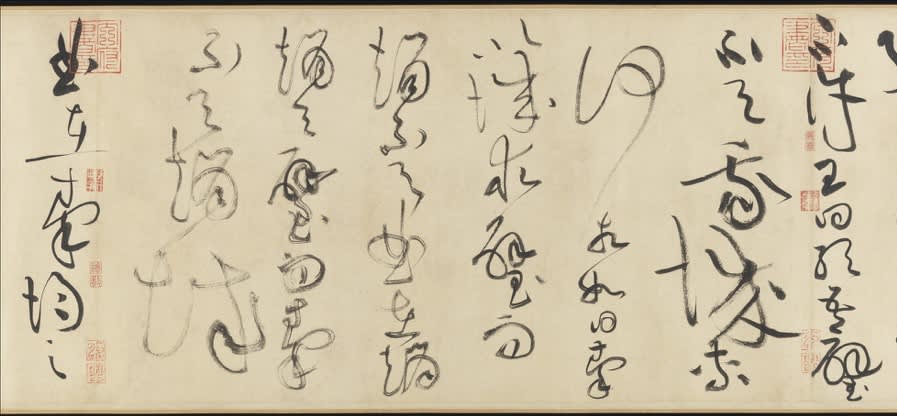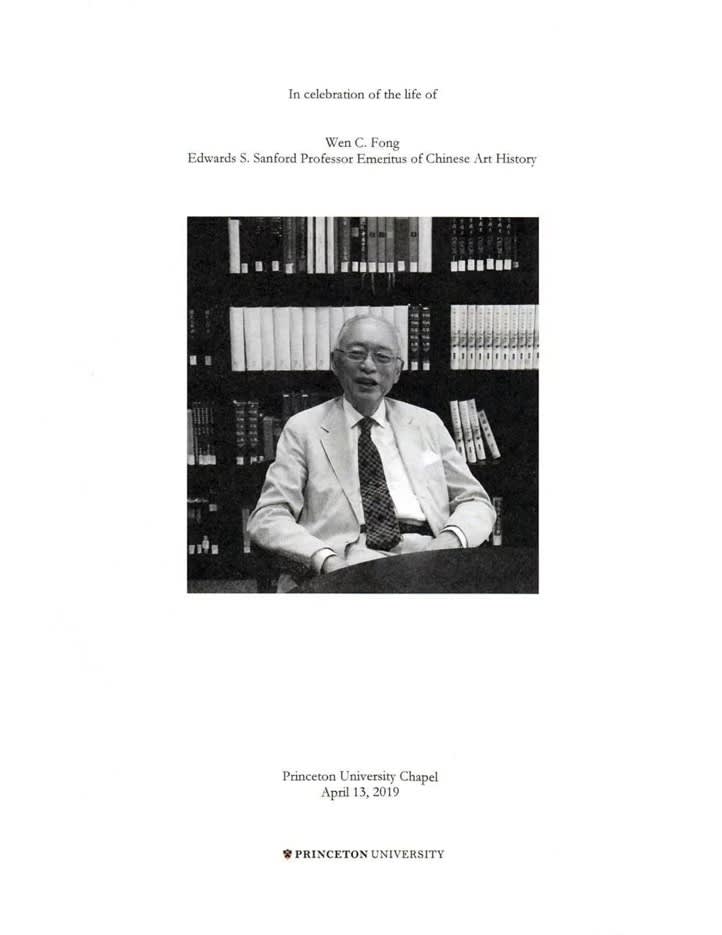During Wen C. Fong's tenure, the Metropolitan Museum completed a series of historically significant acquisitions and donations. This included the purchase of twenty-five exquisite ancient Chinese paintings from the artist and collector C.C. Wang, 421 Japanese art objects obtained from Harry C. Packard, Chinese calligraphy and painting works received from John M. Crawford Jr., Chinese paintings from the 19th and 20th centuries collected by Robert H. Ellsworth, paintings acquired from the P. Y. and Kinmay W. Tang family, and Chinese paintings from the Oscar L. Tang family collection, among others. Fong’s level of expertise, social resources, negotiation abilities, the relatively lower prices of Chinese artworks in the last century, and the strong support of numerous New York collectors contributed to these historically significant donations and collections. According to Maxwell K. Hearn and James C. Y. Watt, former directors of the Asian Art Department at the Metropolitan Museum, those three decades were considered a golden period for the development of Asian art at the Metropolitan Museum. For future generations, such achievements are seen as highly desirable but difficult to attain.
Wen C. Fong also led the construction of the Astor Court at the Metropolitan Museum. The Astor Court, also known as the Astor Chinese Garden Court, is a Ming Dynasty-style garden located within the museum. According to Maxwell K. Hearn's recollection, in the late 1970s, Fong identified a space within the museum that had an overhead skylight and proposed the idea of constructing a Chinese garden there. Initially, the project faced resistance from the museum administration because the area where the skylight was to be projected had million-dollar air conditioning ducts in place. Through Fong’s negotiations, the project gained the support the museum’s trustee Brooke Astor, who provided the funding to relocate the ducts and invite twenty-six craftsmen from Suzhou. These craftsmen brought pre-made architectural components from Suzhou and constructed the Astor Court in the style of the "殿春簃 Dianchunyi" pavilion in Suzhou. The courtyard features a Moon Gate, Taihu rocks, bluestone paving, corridors, a small pavilion, and a wooden hall called the "明轩Ming-style Pavilion," which houses Chinese Ming-style furniture acquired from Robert H. Ellsworth's collection in 1976. This exquisite courtyard was completed in 1981 and became the first permanent cultural exchange project between China and the United States after the establishment of diplomatic relations.
In commemoration of the deceased, the Metropolitan Museum of Art has displayed a page from the 1976 donated album "归棹Returning Oars" by Shi Tao, at the entrance of the ongoing exhibition "Streams and Mountains Without End: Landscape Traditions of China." On the wall, there is a written tribute that states, "During Dr. Wen C. Fong's nearly thirty years of service at the Metropolitan Museum, he promoted appointments, gallery installations, acquisitions, exhibitions, and academic research, making the museum an international center for Asian art studies. The Metropolitan Museum and Asian Art Research acknowledge and express gratitude to Fang Wen for his contributions."
In the academic field, Wen C. Fong has been instrumental in advancing the study of ancient Chinese art history within the framework of Western art history. He emphasized the unique expressive language of ancient Chinese art, focusing on brushwork, compositional structures, and the intellectual history of China. At the same time, he bridged the gap between the history of ancient Chinese art and Western art history through formal analysis and stylistic analysis, establishing methodological connections. He often said, "My lifelong experience is to study art history by focusing on artworks." His emphasis on the visual language of artworks is evident in his teaching. His student, Maxwell K. Hearn, mentioned that Wen C. Fong would often open a Chinese calligraphy or painting at the beginning of a class and ask students to describe the visual language of the artwork, urging them to observe and think critically. In the preface to the translated edition of Fong’s works published in 2016, he succinctly expressed his scholarly philosophy: "Chinese painting has its own visual language. Analyzing its forms is the key to deciphering this visual language, thereby revealing its systemic formation, piecing together its developmental history, connecting the evidence of Chinese artworks with intellectual history, and ultimately incorporating them into a comprehensive narrative framework when we seek a holistic understanding of Chinese culture."
Reference
陈葆真. “方闻与中国艺术史学界”.澎湃,2018年10月4日. Accessed May 15, 2019, https://www.thepaper.cn/newsDetail_forward_2500175.
方闻 . 艺术即历史(代自序). 《心印:中国书画风格与结构分析研究》. 上海:上海书画出版社,2017: 3–5.
谈晟广. “方闻教授与普林斯顿学派”. CAFA, 2018年10月6日. Accessed April 30, 2019, https://www.cafa.com.cn/c/?t=8310395.
Barboza, David. “Wen C. Fong, Shaper of Met Museum’s Asian Collection, Dies at 88.” New York Times, October 22, 2018. Accessed April 30, 2019. https://www.nytimes.com/2018/10/22/obituaries/wen-c-fong-dead.html.
Cahill, James. “Wen Fong and Me.” James Cahill. Accessed May 15, 2019, https://jamescahill.info/the-writings-of-james-cahill/cahill-lectures-and-papers/77-clp-155-2006.
Cotter, Holland. “At Met, New Leadership (and Direction) for Asian Art.” New York Times, March 16, 2011. Accessed May 15, 2019, https://www.nytimes.com/2011/03/17/arts/design/at-met-new-leadership-and-direction-for-asian-art.html.
Saxon, Jamie. “Wen Fong, ‘giant in the field of Chinese art history,’ dies at 88.” Princeton University, October 12, 2018. Accessed April 30, 2019. https://www.princeton.edu/news/2018/10/12/wen-fong-giant-field-chinese-art-history-dies-88.
Zuo, Scarlett. “A Day at the MET.” Huffpost, April 7, 2014. Accessed May 15, 2019, https://www.huffpost.com/entry/a-day-at-the-met_b_5098961?guccounter=1.
About the Author
Dr. Guo Xinran, Art Director of Fu Qiumeng Fine Art. Her writings have published on Artforum and artforum.cn. She acquired doctoral degree of Art History at Northwestern University, master's degree of East Asian Studies at Stanford University, and Bachelor's degree of Sociology at Peking University.













